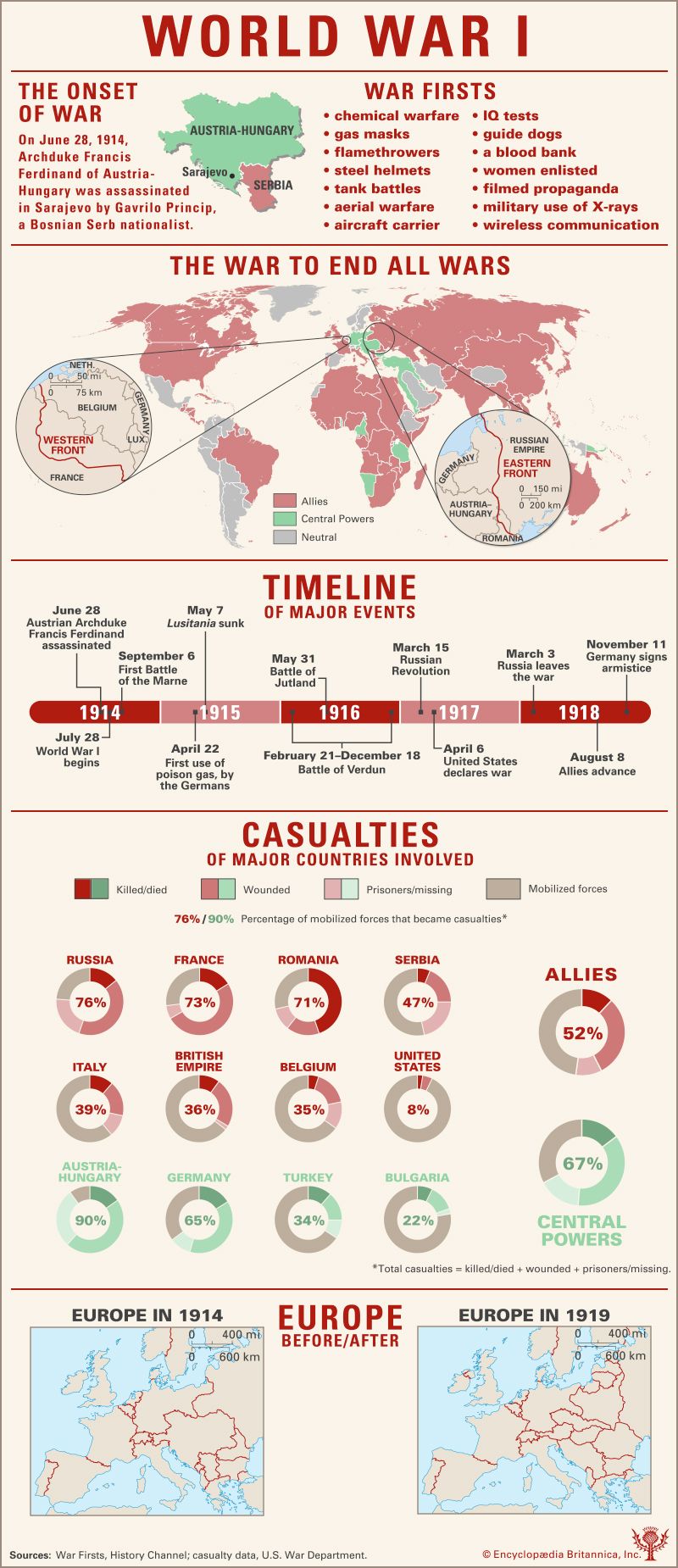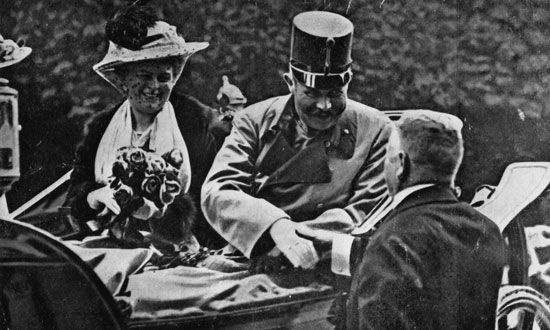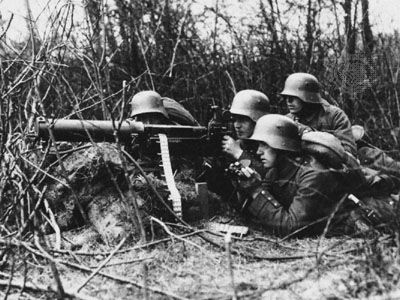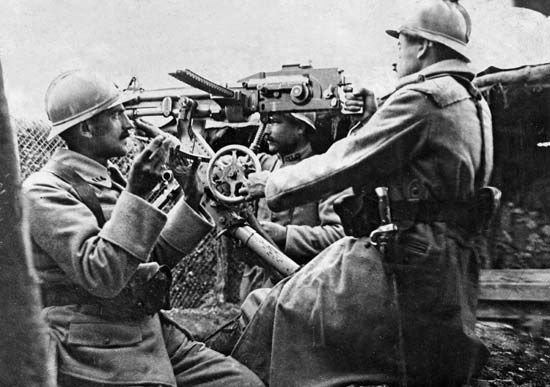The casualties suffered by the participants in World War I dwarfed those of previous wars: some 8,500,000 soldiers died as a result of wounds and/or disease. The greatest number of casualties and wounds were inflicted by artillery, followed by small arms, and then by poison gas. The bayonet, which was relied on by the prewar French Army as the decisive weapon, actually produced few casualties. War was increasingly mechanized from 1914 and produced casualties even when nothing important was happening. On even a quiet day on the Western Front, many hundreds of Allied and German soldiers died. The heaviest loss ...(100 of 31671 words)
- Home
- History & Society
- Science & Tech
- Biographies
- Animals & Nature
- Geography & Travel
- Arts & Culture
- Money
- Birds, Reptiles & Other Vertebrates
- Bugs, Mollusks & Other Invertebrates
- Environment
- Fossils & Geologic Time
- Mammals
- Plants































